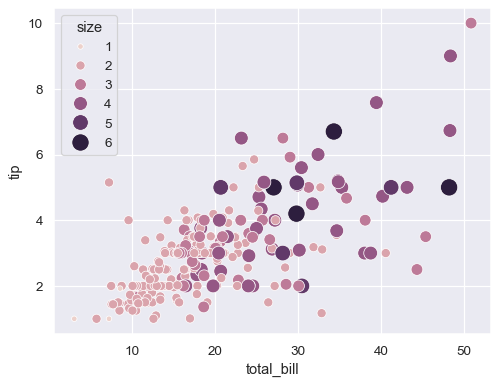

The basic workflow is to initialize the FacetGrid object with Parameter for the specific visualization the way that axes-level This uses color to resolve elements on a third dimension, but onlyĭraws subsets on top of each other and will not tailor the hue Parameter, which plots different subsets of data in different colors. It can also represent levels of a third variable with the hue The plots it produces are often called “lattice”, “trellis”, or This class maps a dataset onto multiple axes arrayed in a grid of rowsĪnd columns that correspond to levels of variables in the dataset. Initialize the matplotlib figure and FacetGrid object. _init_ ( data, *, row = None, col = None, hue = None, col_wrap = None, sharex = True, sharey = True, height = 3, aspect = 1, palette = None, row_order = None, col_order = None, hue_order = None, hue_kws = None, dropna = False, legend_out = True, despine = True, margin_titles = False, xlim = None, ylim = None, subplot_kws = None, gridspec_kws = None ) # Multi-plot grid for plotting conditional relationships. FacetGrid ( data, *, row = None, col = None, hue = None, col_wrap = None, sharex = True, sharey = True, height = 3, aspect = 1, palette = None, row_order = None, col_order = None, hue_order = None, hue_kws = None, dropna = False, legend_out = True, despine = True, margin_titles = False, xlim = None, ylim = None, subplot_kws = None, gridspec_kws = None ) #

In case you have further questions, you may leave a comment # class seaborn.
Seaborn scatter plot legend number how to#
This post has shown how to add a legend to plots in Python Matplotlib and seaborn. In the video, we explain in some more detail how to add a legend to plots in Python Matplotlib and seaborn.įurthermore, you could have a look at some other tutorials on Statistics Globe: Lastly, plt.show() is used to display the plot figure.ĭo you need more explanations on how to add a legend to a plot in Python Matplotlib and seaborn? Then you should have a look at the following YouTube video of the Statistics Globe YouTube channel. The result is a legend displayed on the top left corner of the plot, which is the default position. Next, we introduced the plt.legend() function wherein we parsed an array of weekdays to the labels = argument and defined the legend title as well. That argument colored the points by the day of the week to which they belong. In the sns.scatterplot() function, we defined a new argument hue = to which we parsed day. scatterplot (df ,x = "total_bill", y = "tip", hue = "day" )
Seaborn scatter plot legend number code#
Therefore, run the code below to load the dataset:

We will make use of the tips dataset that comes pre-loaded in seaborn. In this example, we are going to build a simple scatter plot using the seaborn library.įirst, though, we will need to load the dataset that we will visualize in a scatter plot. The legend position can be changed, however, that is not the focus of this tutorial.Įxample 3: Build Simple Scatter Plot in seaborn Next, we introduced a new function plt.legend(), which displays the legend on the plot in the top left corner as the default position. In the plt.plot() function, we defined a new argument label = where we parsed the legend label for each of the two lines plotted on the graph. The only difference is that, here, we have added a legend to the plot. The above plot is the same as the one created in the previous example.


 0 kommentar(er)
0 kommentar(er)
